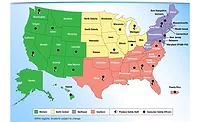Manufacturing News
GRAS is crass: conflicts of interest abound
Manufacturers have added around 1,000 additives to the GRAS list without informing FDA.
In 2010, the US Government Accountability Office (GAO) found that FDA does not provide adequate oversight in monitoring processors that make food additives and label them as generally recognized as safe (GRAS). According to an article published by the JAMA Internal Medicine, conflicts of interest are rampant with food additive company employees, paid consultants or professional experts having the power to conclude their chemicals are GRAS and can be safely added to food. The article, “Conflicts of Interest in Approvals of Additives to Food Determined to be Generally Recognized as Safe: Out of Balance,” is co-authored by researchers from The Pew Charitable Trusts.
According to the report, the term, food additive (e.g., spices, colors, preservatives and other chemicals), has a specific legal meaning: It is defined as a substance whose use “results or may reasonably be expected to result, directly or indirectly, in its becoming” part of food or affecting the characteristic of food. Congress excluded from the legal definition those additives whose use is designated GRAS.
The Food Additives Amendment of 1958 allows food manufacturers to determine when an additive is GRAS, and while it’s not necessary to report a determination to FDA, some manufacturers voluntarily do. In past decades, FDA made many formal GRAS determinations, but recently the agency has made very few. When FDA has agreed with a voluntarily submitted determination, it has responded to the manufacturer by either formally approving the decision or informing the company in writing that it has “no questions” about the chemical’s safety.
According to numbers quoted in the research, more than 10,000 additives are allowed in food, 43 percent of which are GRAS additives. Manufacturers have made GRAS determinations that allow the use of an estimated 1,000 of these additives, without notifying FDA.
Where is the conflict of interest?
The report’s authors used criteria developed by an Institute of Medicine (IOM) committee to evaluate the conflicts of interest of the individuals who make GRAS determinations. The IOM committee defines conflict of interest as a set of circumstances that creates a risk that the professional judgment or actions regarding a primary interest will be unduly influenced by a secondary interest.
In the study, the severity of a conflict of interest is based on the likelihood a decision could be unduly influenced by a financial interest, and the seriousness of possible harm if the decision was influenced. The report considers the primary interest as ensuring the use of an additive is GRAS, consistent with Federal law. The secondary interest is the potential for financial gain from a determination that enables a manufacturer to sell a new additive, expand the use of an existing additive to new foods or increase the amount of an additive in food.
Who makes the GRAS decision?
The report’s co-authors studied 451 GRAS determinations made between 1997 and 2012, which were voluntarily submitted to FDA and posted on FDA’s website. Of those determinations, 22 percent were made by an employee of an additive manufacturer. More than 13 percent were made by an employee of a consulting firm selected by an additive manufacturer, and more than 64 percent (290) by an expert panel selected by a consulting firm of an additive manufacturer. A determination by a panel reflected the view of the entire panel—not an individual member or a subset of members.
The report’s authors, however, found no instance where a manufacturer that submitted a GRAS notice to FDA used a standing expert panel selected by a third party—the method least likely to involve a conflict of interest to establish whether an additive meets the GRAS criteria.
More problematic, according to the researchers, is the makeup of the panels. Many of the same people participate over and over again, thus limiting the range of knowledge and experience available for decision-making. In evaluating the 290 panels that made GRAS determinations, the study found panels averaged 3.5 members, with a maximum of seven. In total, 216 individuals served on at least one panel. Most were consultants, and almost all of them had a doctor’s degree. Some were physicians or held other advanced degrees. However, 10 individuals served on 27 or more panels, and one person served on 128 panels. Over the 15-year period, at least one of these 10 individuals served in 225 panels, accounting for 43 percent (433 of 1,004) of the total number of seats on all 290 panels. Thus, only 65 panels (22 percent) did not include one of these 10 individuals. All 10 identified themselves as consultants; five cited academic positions.
The report finds conflicts of interest between 1997 and 2012 to be the norm in GRAS determinations. Therefore, the authors are calling on FDA to fulfill its responsibilities to the public under the law and minimize conflicts of interest in GRAS determinations. These recommendations mirror much of the 2010 GAO recommendations, including reconsiderations in the safety of GRAS.
To read more of GAO’s recommendations to FDA, visit the GAO website. (http://gao.gov/products/GAO-10-246)
To read the JAMA article in its entirety, visit JAMA’s website. (http://archinte.jamanetwork.com/article.aspx?articleid=1725123)
Looking for a reprint of this article?
From high-res PDFs to custom plaques, order your copy today!







